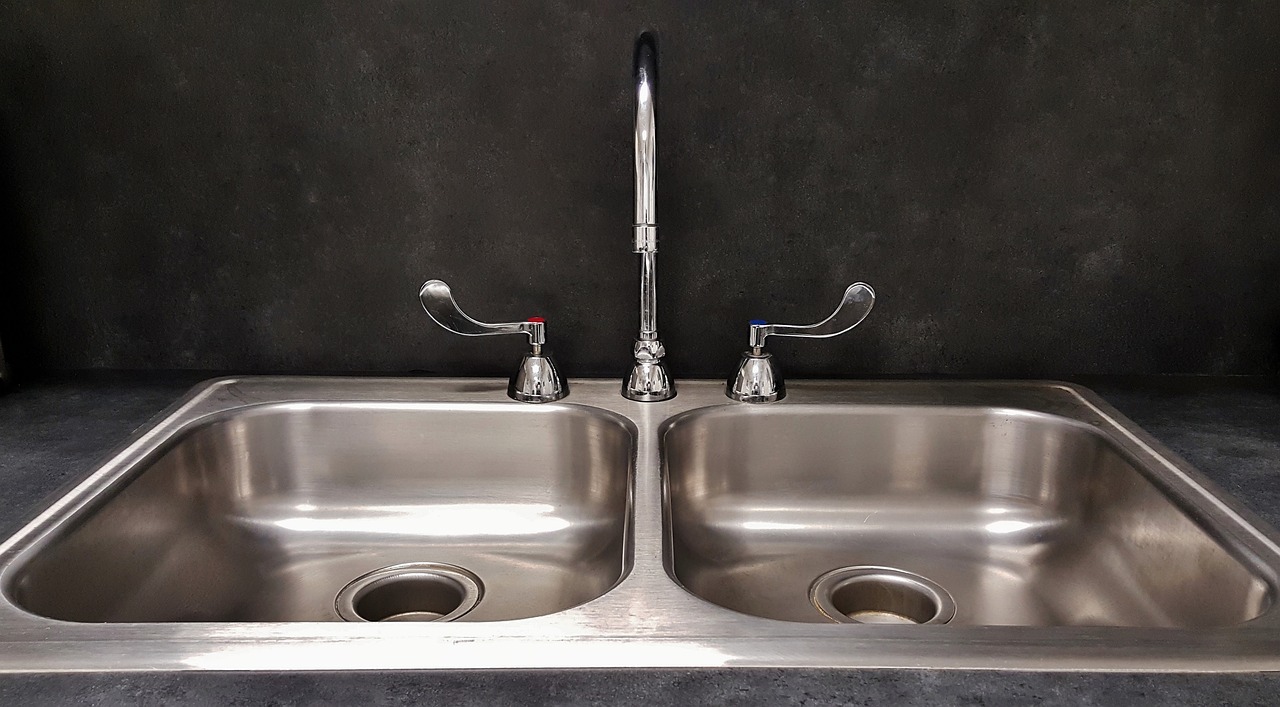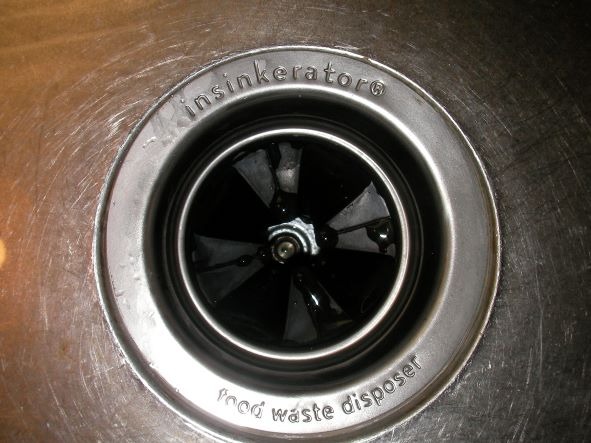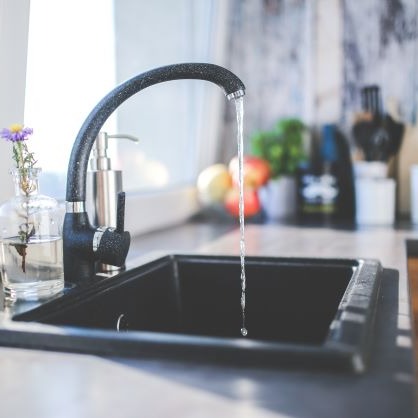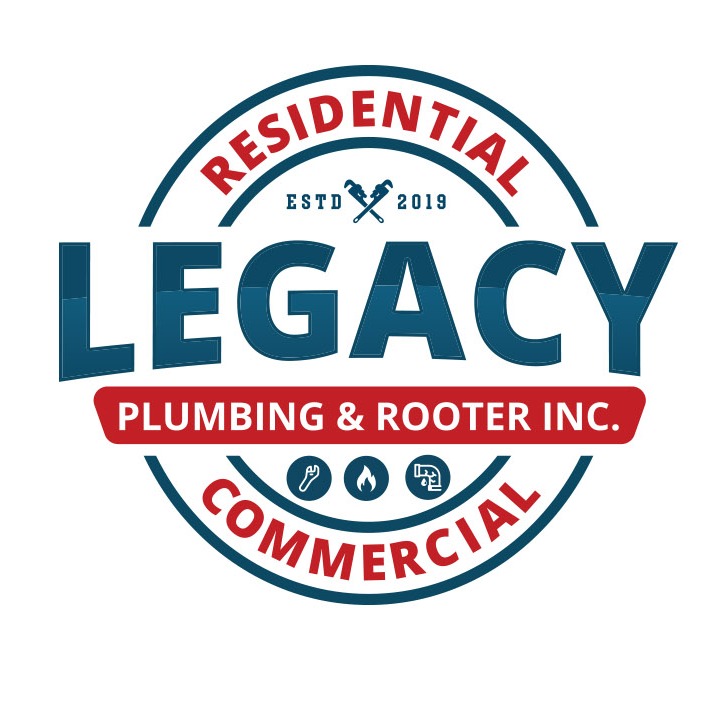When using your garbage disposal, you may encounter the unpleasant situation of water backing up into both basins of your two-sided sink. Along with the water, you may notice scraps of food floating to the surface. This is indicative of a clogged drain line, which, if left unattended, can lead to further plumbing issues. However, there are steps you can take to troubleshoot the problem and potentially unclog the drain on your own.

Reasons for Both Sides of Your Kitchen Sink Backing Up
When you notice that both sides of your double kitchen sinks are clogged and backing up, there are two common culprits to consider: a blockage in the main drain or a clogged garbage disposal. To address these issues and restore the functionality of your sink, you can use a simple but effective method involving baking soda and hot water.
Start by combining baking soda and hot water and pouring it down both drains. This mixture serves as a natural cleaning agent and helps break down any clogs. The baking soda also acts as an odor absorbent, eliminating any unpleasant smells.
The main cause of drain pipe clogs is often food scraps or larger items that are unable to pass through the pipe, becoming lodged and leading to accumulative blockages over time. If these blockages are left unattended, they can severely impair your plumbing system and disrupt the comfort of your home.
The consequences of a blocked drain pipe are twofold. Firstly, your sink will become unusable, making kitchen tasks difficult and inconvenient. Secondly, the accumulation of backed-up food and water will produce a noticeable odor in your kitchen, further diminishing your home's livability.
How to Check and Clean Your Garbage Disposal
To ensure the smooth functioning of your garbage disposal, it's important to periodically check and clean it. Here's a step-by-step guide:
1. Unplug or turn off the circuit breaker: Before starting any work on your garbage disposal, unplug it from the power source or turn off the circuit breaker that controls it at the main power panel. This precautionary step ensures your safety.
2. Clear out any debris: With the disposal completely shut off, remove any visible debris or objects that may be stuck inside. You can use your hands or a pair of tongs to carefully extract any items that are obstructing the blades. Be cautious not to put your hands too far into the disposal to avoid any accidents.

3. Check for food items: After clearing out the visible debris, inspect the drain of your sink by reaching in with your hand. Feel for any food particles or other items that may be causing a blockage. Slowly remove any scraps you can immediately feel. If necessary, you can use a flashlight to get a better look.
4. Test the disposal: Once you have cleared out any obstructions, it's time to test the garbage disposal. Plug it back in or turn on the circuit breaker and run the disposal while running water through it. Observe if the water drains smoothly. If the water still does not drain properly or if you hear any unusual noises, there might be an underlying issue that requires professional attention.
Regularly checking and cleaning your garbage disposal helps prevent clogs and ensures its optimal performance. However, always remember to prioritize safety by disconnecting the power source before working on the disposal.
To prevent such issues from occurring, it's essential to properly dispose of food scraps and avoid placing large items down the drain. Regular maintenance, such as using baking soda and hot water to clear potential blockages, will help keep your sink and drains running smoothly.
How to Clear a Clogged Kitchen Sink Using Baking Soda and Vinegar
Clogged kitchen sink drains can be an inconvenience, but you can easily unclog them using a combination of baking soda and vinegar. Here's a step-by-step guide to help you get your sink flowing freely again:
- Box of baking soda
- Bottle of white vinegar
- Something to plug your kitchen sink drain with
- Kettle of boiled water
- Start by pouring half a box of baking soda into the kitchen sink drain.
- Follow it up by pouring half a cup of white vinegar into the drain immediately.
- Quickly plug the drain with an object that can fully seal the hole, preventing any fizzing mixture from escaping.
- Leave the baking soda and vinegar mixture in the drain for about 30 minutes.
- This allows the combination to work its magic and break down the clog.
- While you wait, boil a kettle of water.
- The hot water will help flush away the dissolved clog.
- Carefully remove the object blocking the drain and slowly pour the boiling water down the drain.
- Be cautious to avoid any splashing.
- If the drain is still clogged, you can repeat the process or consider using a plunger or plumbing snake to clear the blockage.
- To prevent future clogs, it's advisable to repeat this process once a month as a preventative measure.
By following these steps, you can effectively unclog your kitchen sink using the natural cleaning power of baking soda and vinegar. Remember to exercise caution and seek professional help if the clog persists or if you're uncertain about performing the unclogging process yourself.

If you prefer professional assistance, the skilled plumbers at Legacy Plumbing and Rooter are ready to help. Their team is available 24/7 and committed to providing efficient and effective drain cleaning services. Don't take any chances when it comes to your home's plumbing system. If you live in the San Francisco Bay Area and the surrounding cities like San Mateo, San Carlos, Mountain View, Campbell, San Jose, Milpitas, Fremont, Hayward, San Leandro, Burlingame, Daly City and South San Francisco and have questions I suggest calling Legacy Plumbing and Rooter (408) 649-3149. We are here to answer your questions. We can also schedule a plumbing inspection and you can enjoy peace of mind knowing that your home is in good hands.

 Add Row
Add Row  Add
Add 






Write A Comment